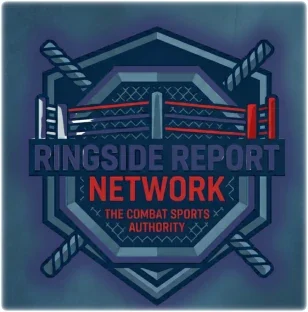In the sprawling, often chaotic world of professional wrestling media, clarity is a rare commodity. Fans are inundated with hot takes and speculation that frequently overlook the art form’s core principles. The Ringside Report Network is here to cut through that noise. We are establishing a new standard for analysis, one grounded in a deep, functional understanding of the craft. That mission begins with speaking the language of the ring.
This guide is more than a simple glossary. It is the foundation of our entire approach and a clear statement of the authoritative content we are committed to producing. By exploring the essential terms of the business—from the creative decisions behind the curtain to the nuanced art of in-ring storytelling—we are providing the tools necessary for a more insightful level of fandom. Consider this your gateway. Master these concepts, and you will not only appreciate the product on a deeper level but also understand the expert framework that informs every article, review, and report we publish.
Foundational Concepts: The Reality of the Artifice
The core of professional wrestling is built on a complex relationship between performance and reality. These terms define the very nature of the product, establishing the boundaries between the story being told and the real world.
- Work: The foundational illusion of professional wrestling. A “work” is anything planned, scripted, or predetermined that occurs during the performance.
- Shoot: The opposite of the work. A “shoot” is any moment when reality breaks through the fiction—an unscripted comment, a legitimate confrontation, or an unplanned event.
- Gimmick: A wrestler’s entire persona—their personality, backstory, costume, and in-ring style. The gimmick is the vessel through which the story is told.
Supreme-Inspired Wrestling T-shirt
Unleash your passion with our Supreme logo-inspired tee! Crafted for comfort and style, this 100% cotton t-shirt features a bold ‘wrestling’ design on a vibrant red background. Lightweight, pre-shrunk, and meticulously constructed, it’s the perfect blend of durability and softness. Elevate your wardrobe and showcase your love for wrestling with this standout tee. It’s ideal for every wrestling enthusiast!
The Archetypes: Inhabiting the Squared Circle
Wrestling stories, like all grand narratives, are built upon archetypes. These roles provide the moral compass for the audience, establishing clear protagonists to cheer and antagonists to jeer in professional wrestling.
- Face: The hero of the story. The babyface, or “face,” is the wrestler designed to earn the audience’s cheers and support.
- Heel: The villain. The “heel” is the antagonist whose job is to draw the audience’s anger and disdain.
- Tweener: A morally ambiguous character who operates in a gray area, possessing traits of both a face and a heel.
The Narrative Engine: Forging Storylines Beyond the Mat
The action inside the professional wrestling ring is only one part of the story. These terms describe the creative process and narrative tools that shape a wrestler’s career trajectory.
- Promo: The art of talking. A “promo” is any time a wrestler speaks to the audience—in an interview or monologue—to advance a storyline and build their character.
- Booking: The master plan. “Booking” is the creative process of planning storylines, matches, and outcomes.
- Push: A significant promotional focus on a wrestler, involving key wins and a move up the card to create a new star.
- What Does a “Push” Mean in Pro-Wrestling?
- Bury: The opposite of a push, where a wrestler is intentionally made to look weak through consistent losses.
- Jobber: A wrestler whose primary role is to lose to more established stars, making them look dominant.
The In-Ring Craft: The Language of Action
When the bell rings, a physical story begins. These terms describe the key elements of the professional wrestling in-ring performance that transform an athletic contest into compelling theater.
- Ring Psychology: The art of structuring a match to tell a logical and compelling story—the ‘why’ behind the moves.
- Selling: A wrestler’s performance of reacting to an opponent’s offense to make the impact and pain look realistic.
- Spot: A pre-planned, high-risk, or particularly memorable sequence of maneuvers designed for a strong crowd reaction.
- Finisher: A wrestler’s signature, protected, and usually final move used to win a match.
- Striking: The punches, kicks, elbows, and other blows that form the connective tissue of a match, making it feel like a legitimate fight.
- Botch: A mistake in the ring; a move or sequence that goes wrong due to miscommunication or error.


